 Barry Erdman is a licensed social worker who learned how diabetes can destroy health, when he was asked to provide counseling for a woman in kidney dialysis. Over months he got to know her and care about her. And he watched diabetes lead to her toes being amputated, then her feet, then her legs, and finally, to her early death. In 2007, Barry was admitted to the hospital with blood sugars at the potentially fatal level of over 600 and the shock of realizing he had become a diabetic. Since then, Barry has adopted a very low carb, adequate protein, high-fat diet. His blood sugars now are typically in the 90s. AND he’s found ways to do this while still being a vegetarian. In fact, Barry leads a low, carb, vegetarian group on Facebook. Barry also recommends 30 minutes of exercise a day and learning to manage stress. Let’s listen in, as Barry tells his story. — Shelley
Barry Erdman is a licensed social worker who learned how diabetes can destroy health, when he was asked to provide counseling for a woman in kidney dialysis. Over months he got to know her and care about her. And he watched diabetes lead to her toes being amputated, then her feet, then her legs, and finally, to her early death. In 2007, Barry was admitted to the hospital with blood sugars at the potentially fatal level of over 600 and the shock of realizing he had become a diabetic. Since then, Barry has adopted a very low carb, adequate protein, high-fat diet. His blood sugars now are typically in the 90s. AND he’s found ways to do this while still being a vegetarian. In fact, Barry leads a low, carb, vegetarian group on Facebook. Barry also recommends 30 minutes of exercise a day and learning to manage stress. Let’s listen in, as Barry tells his story. — Shelley
LISTEN (30 Minutes)
BARRY ERDMAN
I’m a licensed clinical social worker in private practice in Boulder. I’ve been doing that for over 30 years.
And you also have a condition called diabetes. How did that happen?
BARRY ERDMAN
Funny you should ask. Being a vegetarian it never occurred to me that I would have this kind of illness at this late stage of the game. I’m just about to turn 60. It was quite a shock. It was 2007. It was after Thanksgiving when I started to realize something was wrong.
My eyes were blurry . . .
What were the symptoms?
BARRY ERDMAN
I was kind of ignorant. I had no information at all and didn’t understand what diabetes was. But I would sit in my office everyday and there was a digital wall clock and I started realizing it was blurry. I couldn’t see the time any more across the room. I decided to call the eye doctor to get an eye exam. I thought well, it’s just time for my eye exam, and I need to get stronger glasses.
Did you have anything else going on? Were you up at night urinating, or were you feeling extra tired or extra thirsty or were you hungry for sweets?
BARRY ERDMAN
I was drinking a lot of water and going to the bathroom a lot but that didn’t catch my attention It was the vision that got my attention. And even then I didn’t think it was especially wrong. The eye doctor asked what the symptoms were and I explained going to the bathroom, and she said, you ought to get a blood sugar test.
So they pricked your finger or they took a blood draw to check how much sugar was in your blood. What did they fine out?
BARRY ERDMAN
It was right around Thanksgiving. My doctor sent the labwork in and then he went off on vacation and the labwork was sitting there.
So he wasn’t that worried. He was thinking, let’s just do this as a safety precaution.
BARRY ERDMAN
He said, you probably have diabetes. Just wait for the results to come back.
He was saying, after the holidays, we’ll check in on this again.
BARRY ERDMAN
I thought I was going to find out right away. It turned out I didn’t get a call back from him because I learned later that he was out of town. But I had a friend of mine who’s a physician call into the lab to get the results.
High blood sugars . . . and the emergency room
How high were your blood sugars?
BARRY ERDMAN
550
What is a normal blood sugar?
BARRY ERDMAN
Normal blood sugar varies depending on who you talk to. but below 100 would be nice.
So your blood sugars were five times higher than they’re supposed to be. Is this dangerous?
BARRY ERDMAN
At the time I didn’t so because other than my vision being blurry, I didn’t think anything of it. My physician friend and some other people talked me into going to the ER. They took my blood sugar there. It was 635.
Six times higher than it’s supposed to be.
BARRY ERDMAN
Still I didn’t understand what that number was. I don’t think anyone knows what the numbers mean unless they know someone who’s diabetic and understand what that’s all about.
That kind of high blood sugar, that can kill people.
BARRY ERDMAN
I suppose so.
Last will and testament . . .
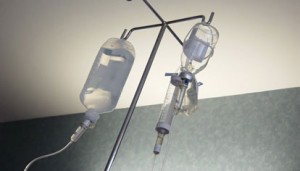 So they said, you’ve got to go into the hospital now, because your blood sugars are so high.
So they said, you’ve got to go into the hospital now, because your blood sugars are so high.
BARRY ERDMAN
That’s right.
That must have been a shock.
BARRY ERDMAN
Sitting there, I was just kind of thinking, I need to get back to work tomorrow. What am I doing in the ER so late. I should go home and get some rest. They were saying, no, you’ll need to stay here overnight and cancel your day tomorrow. I wasn’t too happy about that. They kept me overnight because I was so dehydrated. They rehydrated me with some solution. Salt solution, I suppose, and they were taking my blood sugars and watching them come down.
One reason a person’s dehydrated at that point is because there’s so much sugar in their blood, their body is trying desperately to get the sugar out, so there’s a lot of urinating to try to get the sugars out.
BARRY ERDMAN
I was going to the bathroom, probably on the hour.
Your urine probably had huge amounts of sugar that your body wasn’t able to handle, so your body was dehydrated because of that.
BARRY ERDMAN
I think so. At 3:30 in the morning, the nurse was asking me all sorts of interesting questions such as do I have a last will and testament and who is your next of kin. And I was thinking, this is crazy. I’m just here because my eyes are blurry. Around 4 AM they brought in a folder from the hospital staff person who sits down with the patients to talk about diabetes. She was away for Thanksgiving so they just had a folder with information for me to read. Because I wasn’t getting much rest, I started going through this folder, which I later learned was the American Diabetes Association recommendations about what to eat, and what I need to do now as a diabetic. So that was a rude awakening to go through this pile of literature.
Hospital food raised my blood sugars . . .
At some point, they asked me what I wanted to eat for breakfast. They were going to serve me breakfast. My usual breakfast was a bagel or a banana, or some granola and soy milk. When they delivered the breakfast, they told me I was on a restricted diet, and I said, no I’m not. I’m a vegetarian but I’m not that restricted. They said, no, we can only give you half a bagel and half a banana because you have to have a different diet now.
Because you’re a diabetic.
BARRY ERDMAN
Because I’m diabetic. So they were attempting to serve me a diabetic recommended breakfast.
How did that work out for you? Did it help your blood sugars stay level?
BARRY ERDMAN
At that stage I still didn’t understand what that was all about. So I gladly ate the breakfast and later learned my blood sugars were still going up.
You mean that the food that you ate for breakfast that was supposed to help your blood sugars stay down made your blood sugars go up?
BARRY ERDMAN
That’s what was going on. At the time I wasn’t aware of it. I just knew they were taking blood sugar samples and telling me they were keeping me there for awhile, and calling into the doc on call to find out what should be done. Right before lunch, they were telling me I could go home. Just as I was about to leave, they said, well your lunch is here. It turned out to be vegetarian lasagna. I thought, that looks pretty good. I think I’ll eat that since I’m paying for this, I might as well scarf this down. Before I got up to leave, the nurse came in to take my blood sugar one more time. Then she said, sit down, you’ve got to inject some more insulin. You’re not going anywhere.
You mean after you ate the vegetarian lasagna, zoom! Your blood sugars went up again.
BARRY ERDMAN
I imagine in hindsight, they were giving me foods that made my blood sugars go up.
Why were these professionals, supposedly trained in helping diabetics stay healthy, why were they giving you foods that made your blood sugar go up?
BARRY ERDMAN
Well that’s a good question. Someone ought to answer that someday. My guess is that they were just following protocols that have been set up for a long time without ever being changed.
They were following protocols to give you foods full of carbohydrates, whether it’s vegetarian lasagna or half a bagel or half a banana. All those have a lot of carbohydrates.
BARRY ERDMAN
Anyone who’s diagnosed with diabetes and they get their general advice from a doctor or even a specialist who’s certified to sit down with you as a professional and explain how to eat, the guidelines that they’re telling you about don’t necessarily have the goal of helping you stay healthy on your own. The guidelines help you to stay in some kind of regime that requires medication or insulin to keep you eating something you’re familiar with.
What kinds of medications were you given in the hospital?
BARRY ERDMAN
I think one of them was Actos, and they also started me on Metformin. They didn’t require me to be on insulin. What was important is they had me set up with an endocrinologist the next day. In the hospital, I think they were just there to hold me over until I could get a more accurate diagnosis and treatment for what I needed.
So while you were in the hospital, they did give you some insulin to get your blood sugar numbers down to a place that wasn’t so dangerous. Then they said get out of here and go see and endocrinologist right away.
Get rid of potatoes, peas, pizza, (p)read . . .
BARRY ERDMAN
They happened to set me up with one of the better endocrinologists in town and an appointment the next day. That’s when I started the real education into what’s needed.
You went to see Mel Stjernholm. He’s been the head of the Boulder County Medical Society. He’s been a longtime student, and expert, on diabetes. And he believes that diet can make a big difference.
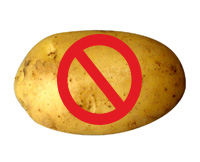 BARRY ERDMAN
BARRY ERDMAN
He had a reasonable plan. He said, just begin eliminating foods that start with the letter “P.” Potatoes, peas, pizza, and he spelled bread with a P. He said to do better, you need to eliminate the carbohydrates.
BARRY ERDMAN
Goodbye pasta. It turns out those foods that begin with “p” are often staples for anyone who subscribes to a vegetarian diet. Rice, pasta and bread are things most people would never think are unhealthy.
Not only do most vegetarians consider those healthy. But the American Diabetes Association says people are fine eating those, sort of in half-portion sizes. Meaning not as much as before, but the American Diabetes Association encourages diabetics to still eat these items. Do you believe that’s good advice?
BARRY ERDMAN
I believe that’s what they tell people. For myself, I learned quickly that it’s better not to eat any of those. I personally recommend to other diabetics that the best way to stay healthy is to avoid carbohydrates at all costs.
Was that a slow transition for you, or was it quick for you because you didn’t want to have the symptoms of diabetes?
Kidney Dialysis . . .
BARRY ERDMAN
It was quick in my case, because a memory that I had early on, was that, some years ago, I was called in from the Mental Health Center to work with a client who was diabetic in dialysis. At the Dialysis Unit here in town.
Is dialysis where they basically filter your blood with a machine because your kidneys don’t work anymore?
BARRY ERDMAN
Dialysis is when you have no more kidney function and you have to be hooked to a machine to filter your blood. It could be six to eight hours two to three times a week.
Dialysis is more common among people who’ve had diabetes a long time, because diabetes, if it’s not controlled, can destroy the kidneys.
BARRY ERDMAN
That’s right. So at the time, as a mental health clinician, I was there with a Hispanic woman who they told me was suicidal. When I got to interview her, I found out she was considered suicidal because she was drinking too much water. They were warning her to go home and not drink water and instead suck on ice cube. It was summer and it was hot, and she was thirsty and drinking more water than they recommended. They thought this meant she was suicidal and losing her will to live.
Because she was thirsty and if you’re a dialysis patient, you have to limit your water intake.
Amputation . . .
BARRY ERDMAN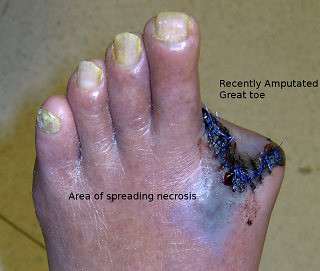
That’s right. So weekly, I’d go over to the dialysis unit while she was there. We’d pull the curtain, and we’d have a nice chat about her life and what she was going through. There wasn’t much discussion about diabetes then. It was more about person concerns. Then one day, I came back to visit with her, and she had a bandage on her toes, and I asked her what was going on, and she said she had to have some toes amputated.
Because she was a diabetic.
BARRY ERDMAN
At the time, I was still so naive. But I started to learn the hard way by learning that the amputation was part of what was going on with the symptoms of diabetes. There’s something going on with diabetes that affects circulation in the body, and it affects the extremities first.
So, if this followed a typical progression, perhaps it started when poor circulation and nerve damage caused by the diabetes meant her toes lost their feeling. Perhaps they had been scratched or had some other minor injury that went unnoticed, and they’d gotten gangrene or some other horrible infection that meant they had to be amputated.
BARRY ERDMAN
That was a kind of sad moment for her, though she wasn’t too discouraged. But in my weekly visits with her, I saw how it all progressed. First it was toes. Then she had a foot amputated. Then she had a leg amputated up to the knee. Then the other leg.
Death . . .
BARRY ERDMAN
Then finally I came in one day and she wasn’t there. I asked the nurses about where she was. The nurses said, Oh, didn’t anyone tell you? She passed away last week.” So that was my rude awakening to what diabetes is all about.
Diabetes is the main cause of amputation in the United States. Outside of war and accidents, it’s the main reason people have limbs amputated.
BARRY ERDMAN
Sad that’s the case. And it’s totally preventable, and has a lot to do with how we take care of ourselves.
Getting back to your story, when you left the hospital in 2007, you were told you had diabetes. You talked with a diabetes expert who is more open-minded than many, an endocrinologist named Mel Stjernholm who said stop eating carbohydrates. And when you thought about what would happen if you did not follow his advice, you could picture this woman who had kidney dialysis and amputations and eventually died of her diabetes.
BARRY ERDMAN
She gave me the first hand experience of being with someone who’s suffering. Being with someone in that empathetic dialogue as a therapist would be with a client, to really understand deeply what impact a chronic disease can have, and what toll it takes on someone’s emotional state and spiritual state and how it affects them and their family and shortens their life. Hard to erase that. That’s a memorable moment when you care about someone and then they pass away, slowly before your eyes. So when I was diagnosed in 2007, I found myself thinking, now that I have this disease, I ain’t going to lose my toes. What do I gotta do? Immediately, I thought of a friend of mine who I had known for many years, who was a long-time vegetarian, like me, and who was also was a diabetic, and I remembered that he also was in dialysis, due to kidney failure. So I immediately called him up and said, “Hey Tommy, can I come visit you in dialysis? I want to check in with you and talk about what you’ve been going through.” He said sure, so I went to the dialysis unit that he was in, and sat there with a roomful of people, perhaps mostly diabetics, who were there who had kidney failure also. He began to remind me of his story of how, unlike me, he was diagnosed early on in life. Like me, he was a long-time, tried and true vegetarian. He went on to tell me that when he was first diagnosed he had thought that maybe if he ate brown rice and vegetables, maybe he could lick it.
Well Barry, your doctor had told you that you might be able to slow down your diabetes if you really cut out a lot of carbs. Including rice. Your friend in the dialysis unit is a vegetarian. He’s a diabetic. Does he cut out the carbs?
BARRY ERDMAN
My friend’s like many diabetics. He has tried to eat reduced carbs, and he tries to stay away from them. But he’s late stage, because he’s dependent on insulin and had no kidneys left. He tries to be careful, but I noticed in having some meals with him that he would eat things that I wouldn’t eat.
Like what?
BARRY ERDMAN
He’d eat the potatoes and peas or vegetables that have more carbohydrates in them than I’m comfortable eating.
You observed all this, and you observed him in the kidney dialysis unit. What did this lead you to think?
BARRY ERDMAN
I became highly motivated to do everything I absolutely could to avoid the scenario of needing insulin, and also like him, naively thinking I can lick this in some way. So I’m going to try hard, at least for a while and see if I can reverse some numbers and prove the doctors wrong and maybe find some way that my pancreas can heal and perhaps produce some more insulin.
How is your friend doing?
BARRY ERDMAN
Sadly he’s not doing very well. He’s moved from the area, so I’m less in touch with him. But he continues to have very complicated health problems.
How are you doing?
BARRY ERDMAN
I’m happy to say that now, my blood sugar numbers are pretty close to being normal compared to someone that doesn’t have diabetes.
Low carb, lower blood sugars, lower weight . . .
When you went into the hospital you had blood sugars somewhere around 500 or 600. Five times higher than normal. What are your blood sugars now?
BARRY ERDMAN
My fasting blood sugars are sometime in the high 90s, low 100s if I snack the night before. After a meal, I rarely see it go above 120.
There’s a number called the hemoglobin A1C that tracks the average blood sugar over the last three months. What were your HA1Cs when you went into the hospital, and what are they now?
BARRY ERDMAN
My A1C at the hospital was 11. And I thought, well that’s a small number. No big deal. Now I know that anything below 6 is preferred. My last A1C was down at 5.4. Actually I checked again, it was 5.3!,)
When you went into the hospital, your hemoglobin A1C was double what it’s supposed to be, and now it’s below the threshold that’s considered dangerous. It’s below 6. What would you say about your weight before you went into the hospital?
BARRY ERDMAN
When I would go to the 9News Healthfair every year to get my bloodwork, I was told that I was overweight, and I was shocked, because I have always been fairly active, and I thought healthy. I was even joking with the people that their measurements must be wrong because they’re considering me to be overweight.
Your height had stayed the same. You’re just about sixty. What is your weight now?
BARRY ERDMAN
After switching to a low carbohydrate diet, I pretty much dropped 30 pounds within a few months and an additional 10 pounds stretched out over more time.
Were you hungry? Were you consciously trying to lose weight?
BARRY ERDMAN
Losing weight was never on the agenda. It was just sort of a side effect of changing my diet and lifestyle routine.
You cut out carbohydrates and you lost weight. Did you just eat fewer calories or did you eat something besides carbohydrates?
BARRY ERDMAN
I was mindful of eating smaller proportions, and I became pretty strict in cutting out specific food groups, like all grains, for example, and also continuing as a vegetarian, increasing certain foods that I wasn’t really eating much of before. So I increased my intake of eggs and nuts, particularly the kinds of nuts that I wasn’t really partial to before. And eliminating fruit, I think that’s the biggest tricky one, because I love mangoes and fruits and of course had a sweet tooth. But since switching over to a low carb, high fat regime with moderate protein, I don’t have the sweet cravings anywhere near where I used to prior to being diagnosed
30 grams of carbohydrate a day . . .
Well, you’re eating more fat. You’re eating fewer carbohydrates, you’re not eating all that much protein but you’re eating enough. How many grams of carbohydrate a day do you think you eat?
BARRY ERDMAN
I don’t spend a lot of time trying to count it, but my guidelines are to shoot for 12 grams of carbohydrate for lunch and 12 for dinner, and lower for breakfast time. Probably around six carbohydrates or less.
About 30 grams of carbohydrate a day is your rough ballpark. The American Diabetes Association says that if anyone has fewer than 100 grams of carbohydrate a day, it can mean that they have poor brain function. How is your brain?
BARRY ERDMAN
I had a lot of trouble, before I was diagnosed, focusing and paying attention. Especially after lunch. Looking back, I realize how much I was struggling, and no one told me anything about what was going on. Since changing my diet, not only do I feel 20 years younger than ever before, my mind is sharper and I have a greater capacity to work with people and to think and to function better than I can remember.
Barry Erdman, the American Diabetes Association says that if you have fewer than 100 grams of carbohydrate a day, it might impede your health and it certainly it will mean that you have less energy. And you’re eating around 30 grams of carbohydrate a day.
BARRY ERDMAN
Let’s not pick on them too much. Let’s just focus on what’s important for people to know
For most diabetics, the American Diabetes Association is where they get their advice on how to take care of their condition. If someone is in a standard public health program. If they go to a doctor. If they go to a registered dietician, they are very likely to hear advice that undermines someone’s attempt to eat a very low carbohydrate, high fat diet. So there is a large institutional bias toward higher carb diets, even though much of the science, and many people’s personal experiences, match in better with what you’re finding for yourself on a high fat, low carb diet. That’s why I’m picking on the ADA.
BARRY ERDMAN
While I join you and believe that is true, I think the dilemma is much greater than that. What we really are facing is our own global beliefs about food and food production and what is a healthy diet and what’s a balanced diet. The ADA and our medical consultants, even if they were to recommend what you are discussing today, very few people would be able to accomplish and feel successful at taking on such seemingly restricted guidelines, because of the way our culture is. Because of our lifestyle. The way that we depend on going out to eat and the way we cook and prepare food at home. It may be that, due to the influence of drug companies and the difficulty of changing a culture, the advice that the ADA gives is kind of like shooting for what’s doable, rather than what’s ideal.
Breakfast is my favorite meal . . .
Well you’re doing this, though. It’s not just an ideal. You are doing a very low carbohydrate, high fat, moderate protein diet. What do you have for breakfast?
BARRY ERDMAN
Breakfast is my favorite meal. Each morning I have two or three eggs in the way of an omelet, stuffed with green leafy vegetables, or onions or peppers or mushrooms, sometimes with cheese, or with cheese alone. I usually also prepare a kefir drink. Homemade kefir.
Kefir’s a fermented milk drink where the microbes have eaten most of the sugar out of it and left behind other nutrients and microbial health.
BARRY ERDMAN
The reason I’ve chosen to have kefir drinks in the morning is because of the natural fermentation, where the bacteria and the yeast grow off of the sugars in the milk, the lactose, and about a third of it turns into lactic acid. It has a yogurt consistency or flavor, but it’s a little better than yogurt because there’s additional probiotic benefits that occur in the fermentation process.
That’s what you have for breakfast is this combination of an omelet and kefir drink with a little bit of blueberries. Now is it a cup of blueberries or is it less?
BARRY ERDMAN
We’re talking about maybe 10 or 15 blueberries.
You’re cautious about having a lot of blueberries, because you want to have less than six grams of carbohydrates in that breakfast.
BARRY ERDMAN
That’s right. Blueberries have sweetness, but they also have fiber and anti-oxidants.
Do you have any mid-morning snacks?
BARRY ERDMAN
I’ll snack on some raw or organic cheese, and I’ll have some almond butter or almond nuts as a snack.
What about lunch?
BARRY ERDMAN
Because of my work schedule, I’ll just have some foods that are from leftover meals. Sometimes it’ll just be raw salad with olive oil. Sometimes just snacking on an avocado or flax seed crackers.
Sometimes it’s just a salad . . . a lot of people think diabetics need to constantly have something sugary along, just in case their blood sugar starts to go low. Keeping a little sugar nearby just in case. It doesn’t sound like you’re doing that.
BARRY ERDMAN
No sugar. We rely on stevia if we want some sweet snacks or sweet drinks. And the fat helps you to feel satiated and takes the cravings away.
Do you find that you have a mid-afternoon crash eating this way, or does your energy stay more stable?
BARRY ERDMAN
Energy is very stable. No crashes at all. Nothing anywhere near what I was doing before when my blood sugar was going up and down so frequently.
What about for dinner? What do you eat?
BARRY ERDMAN
Dinners oftentimes are stir-fried green leafy vegetables. Tempeh dishes. Stir-fried curries, vegetables or stews over something called shirataki noodles which are high fiber noodles. Dinners are fun because often people will say, what do you eat. Do you only eat vegetables? When I think about the joy of cooking and the way of preparing food at home, there’s so much variety and taste of flavor. It does take some time. I don’t mind having shifted my lifestyle to spending more time shopping for more fresh organic produce and cooking at home.
You have created all kinds of vegetarian recipes that are low in carbs, and you’ve created a website where people can exchange these ideas.
BARRY ERDMAN
We have a group on Facebook where people from around the world who are diabetic and subscribing to vegetarian lifestyle are chatting and exchanging personal stories and recipes.
Cashews? Visualize Kidney Dialysis . . .
So there’s a whole group of people who are eager for advice on how to share ideas about low carb and vegetarian. And there are fine points to figure out. You told me a story about cashews versus walnuts, pecans or almonds. You don’t eat very many cashews.
BARRY ERDMAN
Cashews are off the list. My doctor said to avoid things that start with P, such as pasta and potatoes. And so I spell cashews with a P, because they’re high in carbohydrates. I used to love eating handfuls of cashews before. Now I think, if I eat cashews, I’m going to get sick. I’ll have my toes amputated. If I eat almonds, I’ll be healthy and be able to go for a hike. In my own mind, I do this visualization at times to justify, or to keep myself motivated.
Cashews – kidney dialysis. Almonds, pecans, hike.
BARRY ERDMAN
Sounds right.
You have been known to say that that anyone who has diabetes should find some opportunity to visit a kidney dialysis center. What are those like?
Diabetes magazines should show amputees eating cake . . .
BARRY ERDMAN
What was so striking after being in the dialysis unit and then looking at the diabetes magazines — the cover of each of the magazines usually had some luscious piece of chocolate cake or someone enjoying eating a dessert. The cover would say something like, “you can eat anything you like.” When you read the article it says, as long as you have a small sliver, you can indulge. I’ve often thought what they should be doing is showing someone with their legs amputated eating a piece of cake on the cover of the magazine, because it would tell the true story of what’s going on.
You don’t eat small portions of cookies and pastas and cakes and grains. Is it because you don’t want to deal with those numbers of carbohydrates, or are you concerned this would wake up the desire to eat that kind of food, when you’ve made your peace eating low carb food, and you find it delicious.
BARRY ERDMAN
I still am tempted and want to eat sweet desserts at times. My commitment is to find recipes that substitute and recreate the same kind of pleasure of eating certain desserts, but finding out how to design them or develop them or create them with low carbohydrates in mind. So flour-free desserts, sugar free desserts, still are part of my diet on occasion. Turns out I feel guilt-free eating things I know are keeping my blood sugars in the normal range.
And you can think about the kidney dialysis unit where you told me once, it’s such a tough place to be. It’s a hard place even for people to work.
BARRY ERDMAN
It’s a place with a lot of sadness and depression. People don’t enjoy sitting there for most of their waking hours, hooked up to a machine that’s trying to purify their blood. People are very affected at that stage of life and don’t have a lot of freedom. They can’t really do things the way they used to if they’re dependent on sitting in the room several times a week. It’s not a happy place. It’s not like a childcare center where kids are running around playing. These are people at the latest stage of life who are facing loss and grief.
You’d rather not be in a sad place like that yourself, three times a week.
BARRY ERDMAN
I don’t think anyone deserves to be living their life that way.
Waking up in a more youthful body . . .
As a result you’ve found a way to eat, and a way to live where your energy’s better, your alertness is better, your blood sugars are healthier, you can make gourmet, vegetarian meals without the carbs.
BARRY ERDMAN
You know, Shelley, one interesting thing that has happened as a result of this, unexpectedly, was that when I started losing weight due to the low carb diet, I started to feel a body that I hardly remembered. Turned out that my weight in high school was 165, and that’s the weight I am currently. It really is a pleasure to wake up in the morning and feel a more youthful size and shaped body than the one I used to live in. Anyone who’s interested in improving their health deserves to take a careful look at their diet and what they’re eating and how they’re eating and know that no matter what you’re doing, you can do better. There’s other ways to make improvements. Perhaps we should just mention Dr. Richard Bernstein’s book, The Diabetes Solution. He being a diabetic himself, has spelled out the science and rationale for eating low carbohydrates and maintaining a long healthy life, being able to do all the things that anyone would be able to do, even if you’re diabetic.

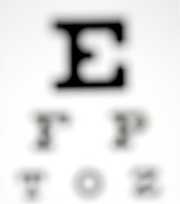


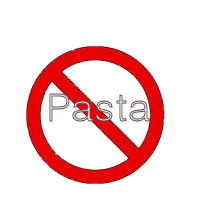
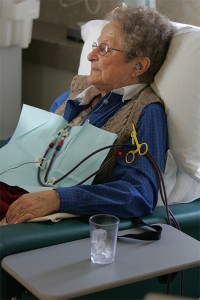
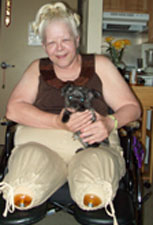


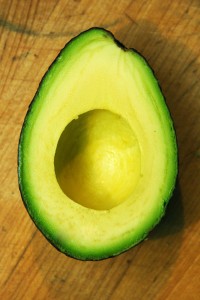

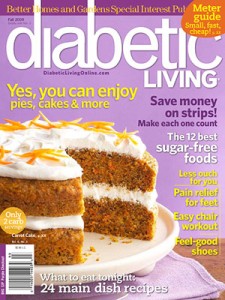
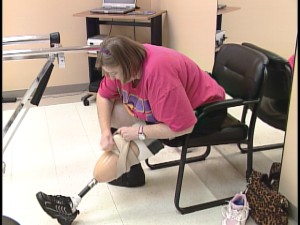
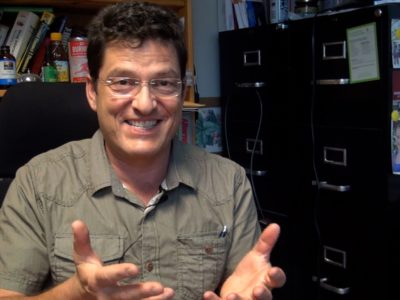
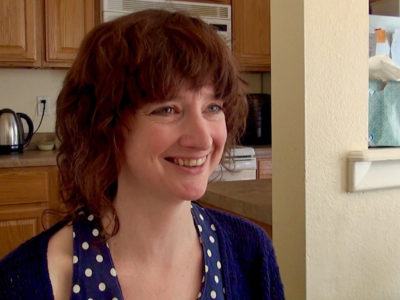
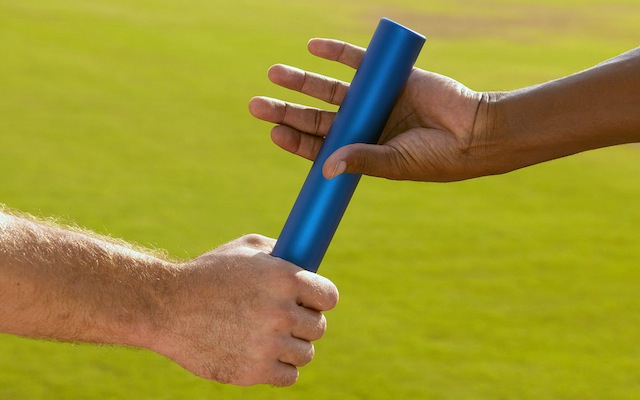

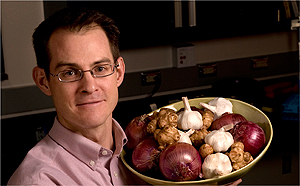
2 comments for “Cake? Cashews? Visualize Kidney Dialysis”